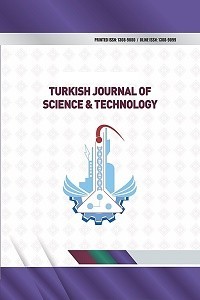Determination of Fracture Paramaters of Effective Crack Model by Wedge-Splitting Test
Determination of Fracture Paramaters of Effective Crack Model by Wedge-Splitting Test
Concrete Effective Crack Model, Wedge-splitting Test,
___
- 1. Kaplan, M.F. (1961). Crack propagation and the fracture of concrete. ACI J., 58(11): 591-610. 2. Kesler, C.E., Naus, D.J. and Lott, L.L. (1972). Fracture mechanics-its applicability to concrete. The Soc. of Mater. Sci., 4: 113-124. 3.Hillerborg, A., Modeer, M. and Petersson, P.E. (1976). Analysis of crack formation and crack growth in concrete by means of fracture mechanics and finite elements. Cem. Conc. Res., 6: 773-782. 4. Bazant, Z.P. and Oh, B.H. (1983). Crack band theory for fracture concrete. Mater. and Struct. (RILEM), 16(93): 155-157. 5. Jenq, Y.S. and Shah, S.P. (1985). Two-parameter fracture model for concrete. ASCE J. Engng. Mech., 111(10): 1227-1241. 6. Nallathambi, P. and Karihaloo, B.L. (1986). Determination of the specimen size independent fracture toughness of plain concrete. Mag. Conc. Res., 38(135): 67-76. 7. Bazant, Z.P. and Kazemi, M.T. (1990). Determination of fracture energy, process zone length, and brittleness number from size effect with application to rock and concrete. Int. J. of Fract., 44(2): 111-131. 8. Xu, S. and Reinhardt, H.W. (1999). Determination of double-K criterion for crack propagation in quasi-brittle fracture, Part II: Analytical evaluating and practical measuring methods for three-point bending notched beams. Int. J. of Fract., 98: 151-177. 9. Brühwiler, E. and Wittmann, F.H. (1990). The wedge splitting test, a method of performing stable fracture tests. Engng. Fract. Mech., 35: 117-126. 10. Wittmann, F.H, Rokugo, K., Brühwiler, E., Mihashi, H. and Simonin, P. (1988). Fracture energy and strain softening of concrete as determined by means of compact tension specimens. Mater. and Struct., 21: 21-32. 11. Ince, R. (2010). Determination of concrete fracture parameters based on two-parameter and size effect models using split-tension cubes. Engng. Fract. Mech., 77: 2233-2250. 12. Ince, R. (2012). Determination of concrete fracture parameters based on peak-load method with diagonal split-tension cubes. Engng. Fract. Mech., 82: 100-114. 13. Ince, R. (2012). Determination of the fracture parameters of the Double-K model using weight functions of split-tension specimens. Engng. Fract. Mech., 96: 416-432. 14. Karihaloo, B.L. and Nallathambi, P. (1989). An improved effective crack model for the determination of fracture toughness of concrete. Cem. Conc. Res., 19: 603-610. 15. ACI-318. (2002). Building code requirements for structural concrete and commentary. Farmington Hills, Michigan. 16. Tada, H., Paris, P.C. and Irwin, G.R. (2000). The Stress Analysis of Cracks Handbook. ASME Press. 17. Neville, A.M. (1995). Properties of Concrete. Fourth Edition, Longman, London. 18. Bazant, Z.P. and Becq-Giraudon, E. (2002). Statistical prediction of fracture parameters of concrete and implications for choice of testing standard. Cem. Conc. Res., 32: 529-556. 19.Ince, R. (2004). Prediction of fracture parameters of concrete by artificial neural networks. Engng. Fract. Mech., 71: 2143-2159. 20. Ince, R. (2010). Artificial neural network-based analysis of effective crack model in concrete fracture. Fatigue. Fract. Engng. Mater. Struct., 33(9): 595-606.
- ISSN: 1308-9080
- Başlangıç: 2009
- Yayıncı: Fırat Üniversitesi
Multy Variable Grey Method For Multy Point Deformation Analysis
Investigation of Soft Stories in Buildings with Hollow Block Slab
Ozan Ince, Humeyra Sahin, Kursat Esat Alyamac, Zulfu Cinar Ulucan
Taner ALATAŞ, Mehmet YİLMAZ, Baha Vural KÖK
Mustafa Ülker, Ercan Işık, Mehmet Ülker
CFD Analysis of Ilısu Dam Sluice Outlet
M. Cihan AYDİN, Ali Emre ULU, Çimen KARADUMAN
Linear Elastic Analyses of Masonry Walls
Musa YETKİN, Yusuf CALAYIR, Hakan ERKEK
Determination of Fracture Paramaters of Effective Crack Model by Wedge-Splitting Test
Kürşat Esat ALYAMAÇ, Merve AÇIKGENÇ ULAŞ, Yavuzhan TAŞ, Ehsan GHAFARİ
